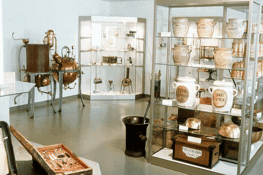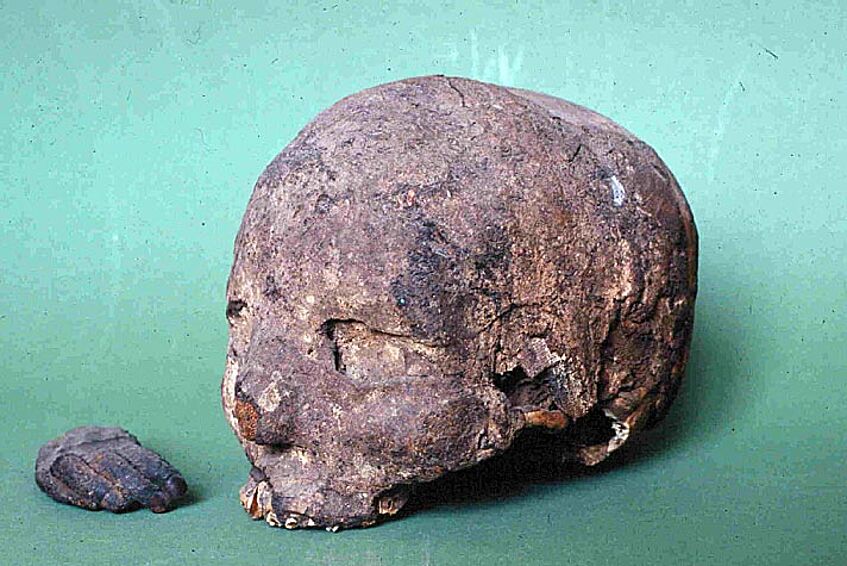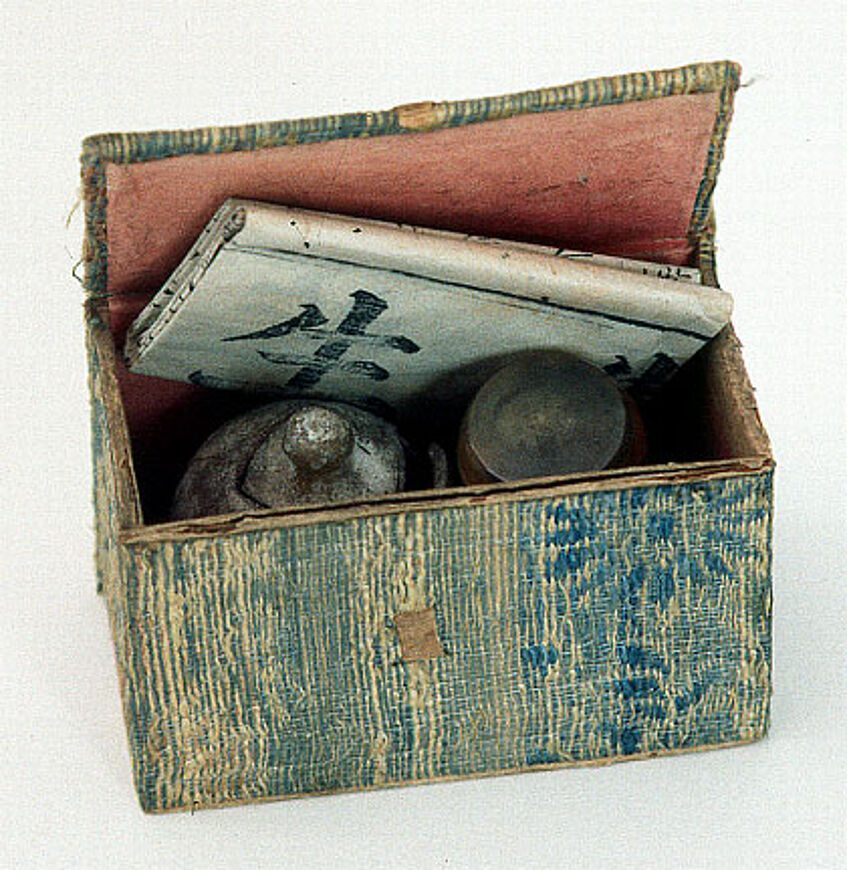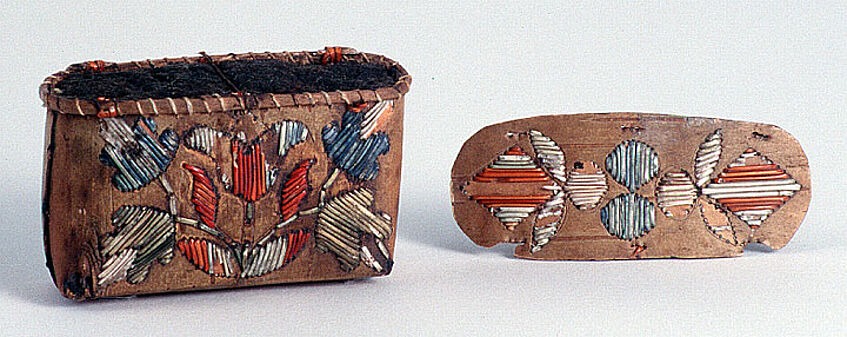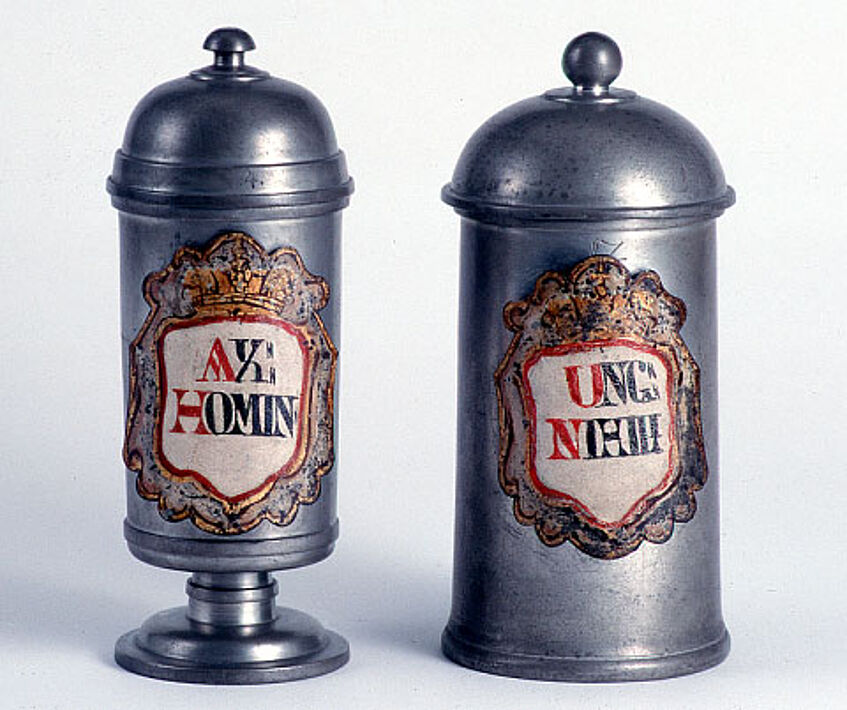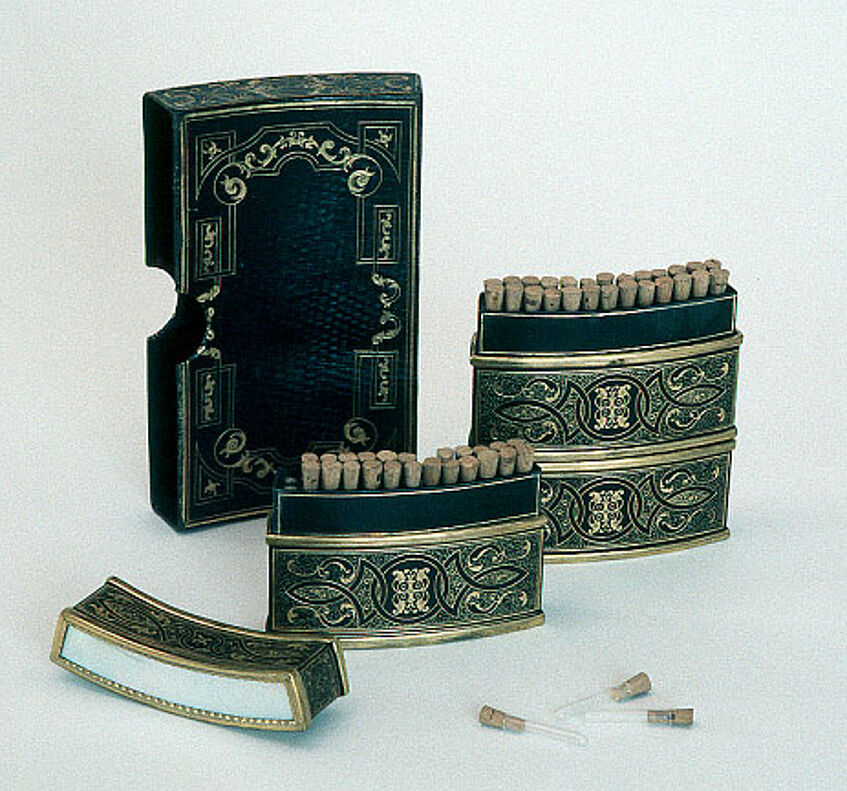The division houses two large historic collections:
- The Drug Collection comprising about 18000 samples of mainly plant origin
- The Pharmaceutical Objects' Collection of about 2000 objects
Since the institute's move into a new building in 1994, a large variety of objects are on display in an exhibition hall, thus enabling the public to view the most interesting pieces of both collections.
The historic collection in 28 photographs on derStandard.at
The Drug Collection
The drug collection represents a comprehensive and valuable collection of medicinal drugs, which have been accumulated over a period of about 150 years. These samples not only originate from Europe but from all parts of the world and bear witness to scientific expeditions, the rich variety of exotic markets and the treasures of the materia medica of foreign cultures.
The Viennese collection was founded in 1849 by Karl Damian Schroff, Professor for Pathology and Pharmacology at the Medical Faculty in Vienna, who was entrusted with teachings of pharmacognosy for students of medicine and pharmacy. He used drug material, minerals and chemicals to illustrate his lectures and familiarise the students with the medicinal ingredients.
In 1854 he purchased a large drug collection (2812 drug samples) from Theodor Martius, Professor for Pharmacognosy in Erlangen, which was the basis of today's collection.
Acquisitions from scientific expeditions such as the circumnavigation of the globe conducted by the imperial frigate Novara (1857-1859), the donation of the drug collection by the "Allgemeinen Österreichischen Apothekerverein" and the drug collections of Franz Berger, director of the druggists school in Vienna, and of Tadeus Reichstein, professor at the University in Basel, enriched our collection greatly.
Despite losses and damages incurred by several moves and two world wars, our collection comprises today nearly 18 000 drug samples including about 300 of animal origin.
The Pharmaceutical Objects' Collection
The Pharmaceutical Objects' Collection
The historic equipment of the institute's research laboratories and the educational pharmacy formed the basis of this collection. In 1977 it was greatly enlarged by instruments and pharmaceutical utensils, pharmacopoeias, books and journals of the former Imperial Pharmacy. The majority of these objects dates from the 19th century, though various pharmaceutical jars and pharmacopoeias are older and even go back to the 17th century. The Imperial Pharmacy was finally closed in 1991 and all articles of historic interest could be incorporated into our collection.
Some devices are rarely found such as the huge plant presses or the impressive distilling apparatus for the large-scale production of medicinal liquors. The pharmaceutical objects of the Imperial Pharmacy now belonging to our collection do not represent all items of the Imperial Pharmacy's historic inventory. Some parts of the historic equipment were handed over to the Technical Museum in Vienna (Technisches Museum Wien) before World War II, where they are still kept.
Apart from the Imperial Pharmacy there were also other institutions which contributed to our collection. In 1978 the governmental drug research laboratory donated several instruments and devices, and in 1993 various utensils of daily pharmaceutical practice belonging to the pharmacy of the General Hospital in Vienna came into our possession.
Furthermore, even private persons generously donated various very interesting pieces in the past.
Contact
ao. Prof. Dr. Liselotte Krenn: liselotte.krenn@univie.ac.at

